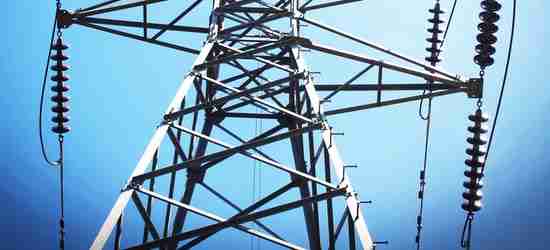India’s switch from coal to renewables could happen over several years, not immediately

By Prasad Nair
Posted on 19 Oct 2020
India has ambitious plans to swap
coal-fired plants with renewable ones for reducing its carbon footprint. Shri
R.K. Singh, Minister of Power and New and Renewable Energy while speaking at a virtual event organized by NITI Aayog recently
said that close to 30 coal-fired power plants in India would be discontinued
and the government plans to supplant it with renewables.
In two years from now, the government’s
target is to reach 175 GW of renewable-based installation capacity and in a
decade meet around 40% of energy requirements from non-coal sources.
Interestingly, the country to a large extent depends on economical inputs from
China and elsewhere to meet its demand for solar cells and modules which the government wants to curb.
India’s annual installed and functional
capacity of solar modules was 10 GW while for solar cells it was 2.5 GW. The
minister said that the government planned to increase this to 25 GW for solar
cells and modules in two years. In order to protect the interests of local
manufacturers from cheap imports, the government extended safeguard duty on
imports of solar cells and modules by a year and plans to impose an additional
tax on their imports.
Moreover, the government is also
considering raising import duty on solar inverters used by consumers to connect
solar panels for converting direct power to electricity. Importantly, the
government is keen to set up coastal renewable energy equipment manufacturing
hubs by roping in the private sector. Developments such as these may be music
for environmentalists but critics have a different take.
To give a push to renewable energy many
coal-fired projects (roughly around 47 GW) in various stages of development
were cancelled in India last year but over 8 GW of new coal-fired projects were
under construction. A report titled ‘Boom and Bust 2020: Tracking the Global Coal
Plant Pipeline’ earlier revealed that India which had 19.3 GW coal power capacities
was aiming at an increase.
As per the report, four new coal-fired
plants were commissioned recently – Adani Godda, Patratu, and Udangudi having 1.6
GW each and Yadadri with 4GW. The new coal-fired projects attracted good
investments from Power Finance Corporation and Rural Electrification
Corporation which come under the jurisdiction of the Ministry of Power.
The report also shed light on a perturbing
trend of new coal-fired power plants set up outpacing the discontinuation of
the old plants which had a negative impact on the plant load factors of coal
plants and led to overcapacity. The new capacities which are being added to the
grid and the new projects which are being given clearances by the government
say a different story, say market analysts. The country must have a stricter
policy of retiring old plants and not giving clearance to new ones if they are
serious about switching to renewable energy, they say.
It is easier said than done. The
government’s planning arm NITI Aayog in a 2017 report estimated that the share
of coal in India’s energy mix in 2040 to be around 44%.
This means coal, which is currently behind
72% of India’s electricity generation, has many more decades of bright future
before it finally yields to renewables. While the country has shelved several
hundreds of megawatts of power projects in pre-construction stages in the last
some years, it currently has around 63GW of coal-fired projects in
under-construction mode.
Discarding these projects will simply mean
that close to $50 billion lent from public banks turning NPAs. And this is when
lenders in the sector are already finding it difficult to restructure almost an
equal amount in stranded assets.
So it looks highly improbable that India
can afford to put the interests of public sector banks in jeopardy. More so in
the aftermath of the pandemic that has redrawn priorities.
With a 7% growth forecast in electricity
demand, India should ideally find it easier to meet the running expenses of the
existing coal-fired plants than infusing huge capitals freshly in the much an uncertain renewable sector, at least in the immediate future.
Although thermal generated power is facing
challenges in terms of logistics constraints and payment issues with
electricity distribution companies, coal is still a safer bet especially in
times of the pandemic when entities are operating in the survival mode.
Even the renewable sector which perhaps
enjoys the advantage of competitive pricing has also taken adverse hits in
terms of the structural issues which have been plaguing the Indian power
sector. For example, receivable delays are a bane for renewable developers.
Furthermore, import duties on solar PV modules have also led to cost increases
and uncertainties for projects which have signed power purchase agreements at
fixed prices.
It would, thus, be safe to surmise that coal
will continue to emit its light for several more years to come until it fades
away into oblivion.
- India’s climate finance blueprint: A snail’s pace or a fast gallop?
- India imports 2.6 Mt steam coal, 0.8 Mt coking coal (23–29 Mar)
- India boosts energy security with record coal production
- Indian Government lifts restrictions on coal purchases for power plants
- India imports 4 Mt steam coal, 1.4 Mt coking coal (16–22 Mar)
- Powering the grid: The impact of electric vehicles on India’s energy infrastructure
- India imports 2.9 Mt steam coal, 1.3 Mt coking coal (09–15 Mar)
- India’s rising coal use: Balancing energy demand and sustainability goals
- India imports 2.8 Mt steam coal, 0.6 Mt coking coal (02–08 Mar)
- India’s green hydrogen mission: Powering a sustainable future